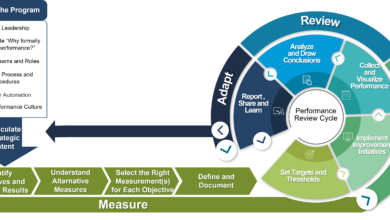Data visualization means telling a story that data represents by presenting it in a visual context. You can read more about data visualization on this link here. An example is if a business owner’s task is to gather data from different platforms. He will need to spend some time collecting, arranging, and interpreting a lot of numbers and figures. He may also need to extract critical information from tons of data. All these will take a long time to do.
With the help of data visualization, he can effortlessly gather and interpret the information that can help the growth of his business. For example, if he is selling coats and shoes for the whole year, he will see the numbers change every month. He might see that the shoes’ sales are constant throughout the year. However, the coats are best sellers during the months of January and December but fail to hit the quota for the month of July. Without data visualization, it will take a lot of time before he sees this trend and it may be too late to take any actions.
There are a lot of data visualization examples available on websites and other sources nowadays. They are all useful, but one type of visualization can be better suited to a particular business than the other.
Some Examples of Data Visualizations

1. Line Charts
This is a type of chart that is used to predict business trends in a specific interval of time. The data is drawn as graphs with the X and Y axis. There are points that are known as markers and they connect to each other through a line segment. This is one of the most basic visualizations that are used by many companies today.
2. Area Charts
An area chart or area graph shows quantitative data in a time-series relationship. The difference of area charts to line charts is that the former can represent volume while the latter cannot. There are colors, hatchings, and textures available on this kind of visualization. It compares two or more quantities that change over time. If you are a merchant and you want to know how well your three chains of stores are doing over a period of one year, stacked area charts are the one that can help you the most.
3. Population Pyramids
This is also known as an age-sex pyramid. It shows the distribution of different ages in a country or population. The graph is pyramidal in shape. The x or horizontal axis commonly shows the population size while the y or vertical axis commonly shows the age group of a particular population. Population pyramids can often help agencies to identify which community needs family planning and which ones need more care for old people.
4. Bar Charts
This chart is often depicted by rectangular bars that can be plotted in a horizontal or vertical manner. These bars are similar to the line chart. Many people use bar graphs to compare similarities and differences between the two groups and track the changes over time. Bar graphs are not only limited to two groups. You can also use them to compare multiple variables in a specific period of time.
5. Pie Charts
A pie chart or a circle chart is used to show a part of a whole. This type of visualization commonly uses a circle that is divided to illustrate numerical proportion that is often depicted in percentage. Business owners who want to take a look at how each of their merchandise is selling can find a lot of benefits in the pie chart.
6. Treemaps
This is a hierarchal display of data where data are drawn in rectangles. The rectangles are often part of a whole and they are proportional to each other. For example, if you are running a restaurant business and you want to use treemaps, you can draw a large rectangle for your pizza that has higher sales than the fruit shake. If you have five or more categories that you need to represent visually, you will find greater success in treemaps.
7. Histograms
This is a type of data visualization that is ideal for frequency distributions. Histograms can give a lot of information about the number of times a specific event has occurred. They are generally shown like bar graphs. You can find this type of visualization to be convenient if you want to know if it is possible for a certain item to sell at 500 pieces a day given the historical data from histograms.
8. Scatter Plots
This is also called scatter diagrams. This is a kind of graph that represents two-dimensional dots along two axes. This is commonly used when you want to reveal some kind of correlation between the variables. For example, you are measuring the height and weight of children in a specific area. You may find out that taller children can weigh less than the shorter ones. However, enough samples on the scatter plots can show a general trend that the children’s weight can often be correlated with their height.
The Bottom Line
In this world, data visualization is essential for businesses to see where they are currently and where they are going. Data visualizations will be able to save them time and take action immediately if there is a need. If you want to know what kind of visualization will suit you best, contact an expert today. Visualizations vary greatly. You need something that is easily understandable in the industry were you are at. Experts will be able to guide you and provide some insights to lead you in the right direction. Employ data visualization today and see the growth of your business.




